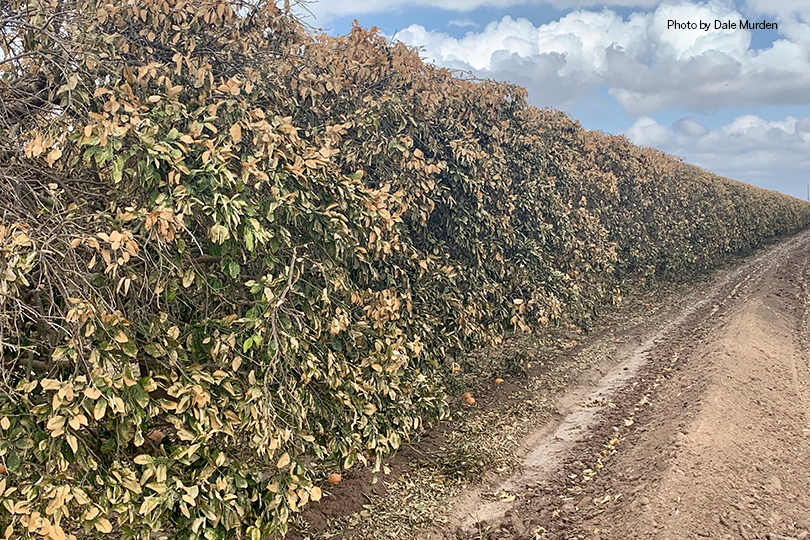By Jennifer Whitlock
Field Editor
After suffering through the coldest temperatures the area has seen in more than 30 years, Rio Grande Valley farmers and ranchers are assessing the damages left in Winter Storm Uri’s wake.
“We hit a low of 21 degrees, and over a three- to four-day period, we probably had 30 plus hours below freezing and 10 to 16 hours below that critical 28 degrees,” Jim Hearn, Texas Farm Bureau Radio Network Rio Grande Valley correspondent, said. “Row crops that had been planted will have to be replanted.”
Citrus trees are still being evaluated, but many trees show signs of damage. About half of the region’s grapefruit crop and 80 percent of the Valencia orange crop was still in the field when the storms hit.
Very little of the remaining grapefruit crop will be salvageable even for juice, according to Hearn. The quick return to warmer temperatures likely turned the fruit into mush.
Chances for a commercial Rio Grande Valley citrus crop in 2021 are doubtful. Lemon and lime blossoms are black, and new growth is dying on the tree, Hearn noted in an interview on the Texas Farm Bureau Radio Network.
“Hedgers will be rolling in the Valley very shortly to find out how much we’re going to have to trim back these trees, but it could be as much as 18 inches,” he said.
Vegetable growers were hit hard, too.
Most mature onions were already harvested, but much was still left in the field. There will probably be a marketing gap in the produce sector because Mexican growers and others in the South were also affected by the spate of extreme winter weather.
“The packing sheds were shut down because of lack of electricity,” Hearn said. “So, vegetables and other food was not packed, and because of the icy roads, truck traffic heading into the Valley to pick up produce was basically halted.”
Sugarcane growers who would normally be at peak harvest are also seeing damages to their crops.
The freezing temperatures caused the moisture in the plants’ canes to swell and eventually split the canes open. Hearn noted as the weather warms back up, the sugar content will begin to evaporate from the split cane, causing major losses.
“With several thousand acres remaining to be harvested, this year’s sugar cane is going to cost growers millions of dollars in lost revenue,” he said.


Saddens my heart to read this… we all love our vegetables & fruits.. God bless Every Farmer & Rancher❤️🙏
We were lucky enough to have enough round bales on hand for the stock. We had a pump freeze in the pump house, but we’re able to find a replacement. Had a heat lamp in the pump house, then a electric line went down in a pasture so now no more heat in the pump house. However everything is now back to
normal. Also we had a generator that I inherited from a old long time friend who ha since passed.